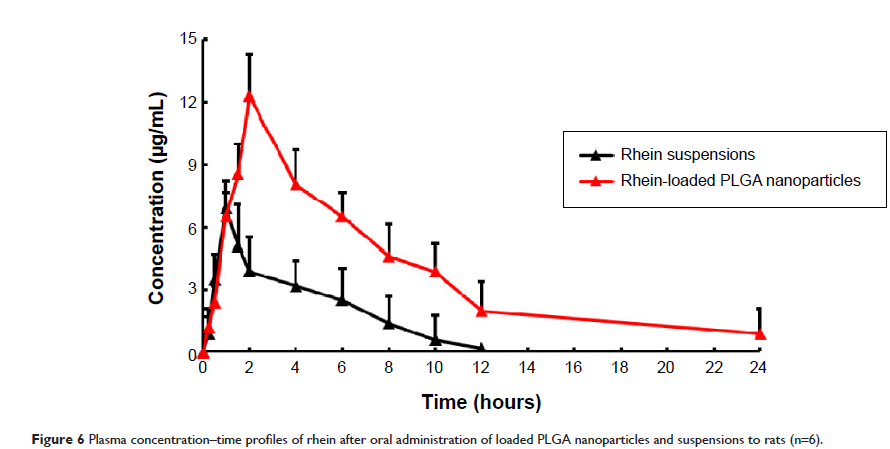109669
论文已发表
注册即可获取德孚的最新动态
IF 收录期刊
- 3.4 Breast Cancer (Dove Med Press)
- 3.2 Clin Epidemiol
- 2.6 Cancer Manag Res
- 2.9 Infect Drug Resist
- 3.7 Clin Interv Aging
- 5.1 Drug Des Dev Ther
- 3.1 Int J Chronic Obstr
- 6.6 Int J Nanomed
- 2.6 Int J Women's Health
- 2.9 Neuropsych Dis Treat
- 2.8 OncoTargets Ther
- 2.0 Patient Prefer Adher
- 2.2 Ther Clin Risk Manag
- 2.5 J Pain Res
- 3.0 Diabet Metab Synd Ob
- 3.2 Psychol Res Behav Ma
- 3.4 Nat Sci Sleep
- 1.8 Pharmgenomics Pers Med
- 2.0 Risk Manag Healthc Policy
- 4.1 J Inflamm Res
- 2.0 Int J Gen Med
- 3.4 J Hepatocell Carcinoma
- 3.0 J Asthma Allergy
- 2.2 Clin Cosmet Investig Dermatol
- 2.4 J Multidiscip Healthc

已发表论文
用于口服递送的大黄酸加载聚纳米粒 (乳酸-共- 乙醇酸) 的制备、表征和体内研究
Authors Yuan Z, Gu XH
Published Date April 2015 Volume 2015:9 Pages 2301—2309
DOI http://dx.doi.org/10.2147/DDDT.S81320
Received 21 January 2015, Accepted 6 March 2015, Published 21 April 2015
Abstract: A novel rhein formulation based on poly(lactic-co -glycolic acid) (PLGA)
nanoparticles (NPs) suitable for oral administration was developed in this
study. The designed nanosystems were obtained by a modified spontaneous
emulsification solvent diffusion method. The morphology of rhein-loaded PLGA
NPs showed a spherical shape with a smooth surface, without any particle
aggregation. Mean size of the NPs was 140.5±4.3 nm, and the zeta potential
was -16.9±3.1 mV. The average drug loading was 3.9%±0.7%, and
encapsulation efficiency was 84.5%±6.2%. Meanwhile, NPs are characterized by
the slower release (only about 70% of rhein is released within 5 hours),
and the model that fitted best for rhein released from the NPs was Higuchi
kinetic model with correlation coefficient r =0.9993,
revealing that rhein could be controlled released from the NPs. In vivo, NPs
altered the distribution of rhein, and the half-life after oral administration
was prolonged remarkably more than those of suspensions (22.6 hours vs
4.3 hours). The pharmacokinetic results indicated that the NPs had
sustained-release efficacy. The area under the curve0–∞ of the NPs
formulation was 3.07-fold higher than that of suspensions, suggesting that the
encapsulated rhein had almost been absorbed in rats over the period of
12 hours. Although rhein-loaded PLGA NP formulations are hopefully used as
a chemotherapeutic or adjuvant agent for human gastric cancer (SGC-7901), their
in vivo antitumor effect and mechanisms at the molecular level still need
further study.
Keywords: rhein, PLGA, nanoparticles, release, pharmacokinetics, SGC-7901
Keywords: rhein, PLGA, nanoparticles, release, pharmacokinetics, SGC-7901
